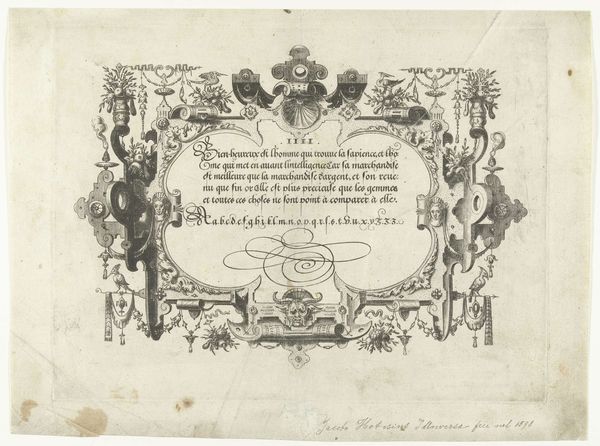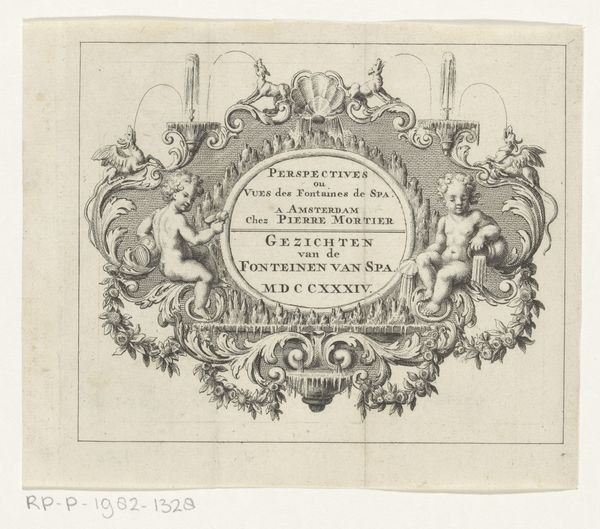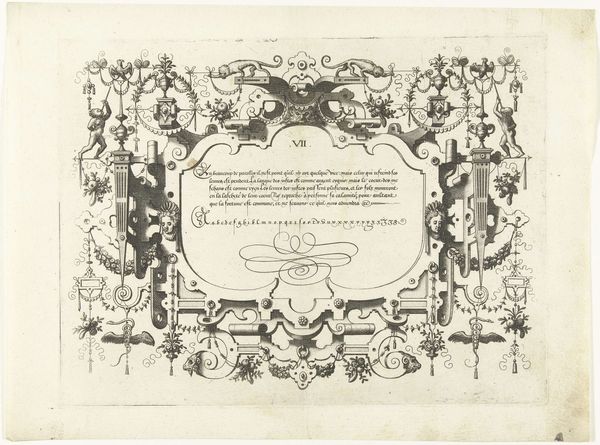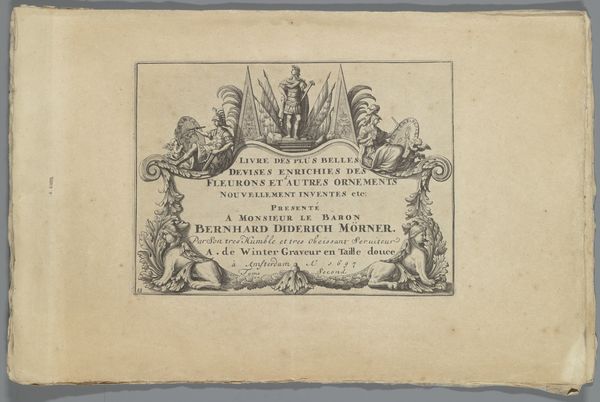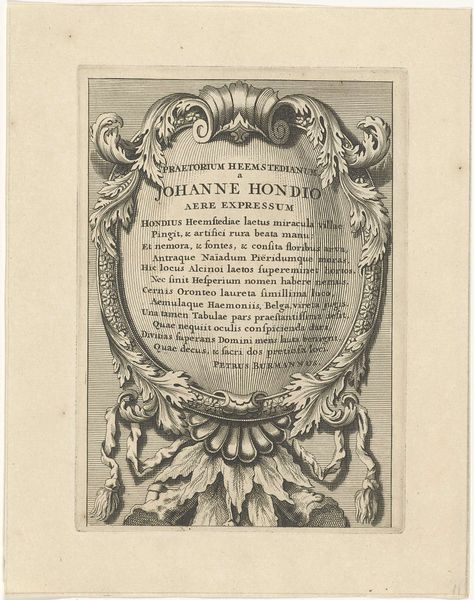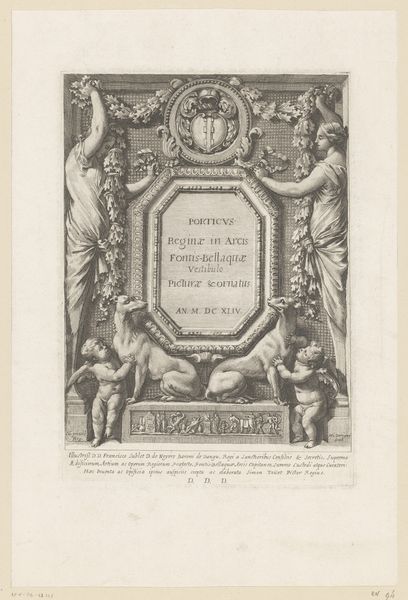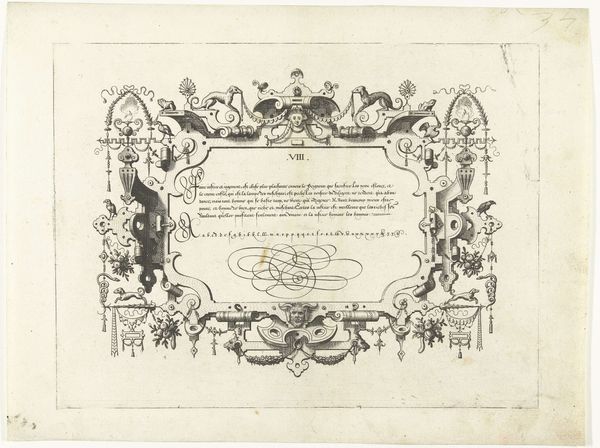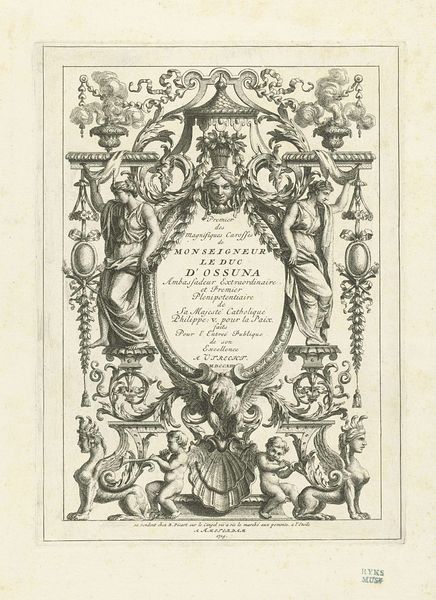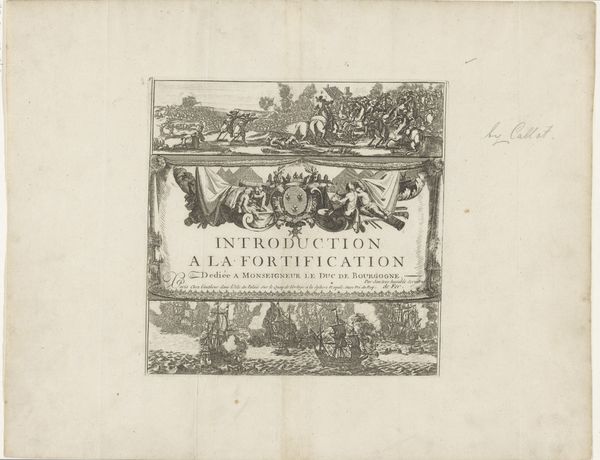
print, engraving
#
baroque
#
ink paper printed
# print
#
pencil sketch
#
old engraving style
#
figuration
#
line
#
history-painting
#
engraving
Dimensions: height 288 mm, width 301 mm
Copyright: Rijks Museum: Open Domain
This print by Jean Pesne, likely created in the late 17th century, presents us with a cartouche dedicated to the labors of Hercules, flanked by putti and symbolic attributes. Notice how the lion skin, draped across the top, and the club at the left, are not mere decorations, but powerful symbols. The skin evokes the Nemean lion, Hercules' first labor, representing his triumph over primal, untamed forces. The club, a constant companion, signifies strength and the will to overcome adversity. These symbols echo through time. The lion, for instance, appears in ancient Mesopotamian art as a symbol of royalty and power, later adopted by various cultures. The figure of Hercules himself, a hero battling monstrous forces, is a recurring archetype – a testament to humanity's enduring fascination with the struggle against chaos, reflecting deep-seated psychological needs for order and mastery. Consider the emotional resonance of these symbols. The putti, innocent and playful, contrast sharply with the violent connotations of Hercules' labors, creating a tension that engages us on both a conscious and subconscious level. These images evolve, resurface, and adapt, mirroring our ever-changing relationship with the past and with the universal themes that continue to shape our collective psyche.
Comments
No comments
Be the first to comment and join the conversation on the ultimate creative platform.

